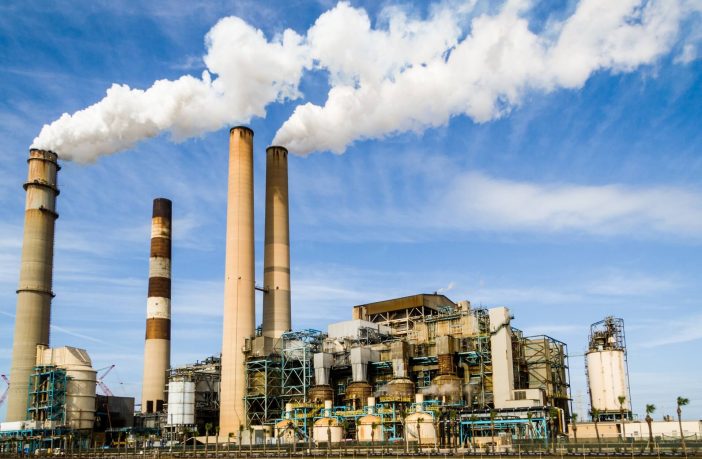- As utilities and investors prepare to build over 88 GW of new gas-fired power plants before 2030 in the USA, communities across the country are asking for healthier options.
Just this past April, regulators in Arizona made the surprising call to reject a proposed gas plant — not only on the basis of economic risk and insufficient process, but also because it would have significant negative health consequences for local communities already suffering environmental injustice.
Related news: Is your gas stove bad for your health?
This is one recent example of a growing number of regulators that have referenced community health and environmental justice in decisions that direct utilities to look for alternatives to proposed gas plants. And in many cases, this has been successful, helping utilities uncover more creative and cheaper alternatives. In Oxnard California, for example, pushback from the community and city around a proposed gas peaker plant caused the state and utility to review alternatives and instead build cost-effective demand response and storage solutions. Prior to its 2021 policy update, the Oregon PUC denied new gas power plants amid overwhelming community opposition, and instead issued a competitive solicitation for non-emitting options.
Over the past few years, more states have also passed policies that make environmental justice and equity explicit goals for utility regulation, systematically putting new proposed fossil gas plants under further scrutiny. Legislation passed in New Jersey in 2020, for example, mandates permit denials if analysis shows that new facilities will further harm overburdened communities, and in Washington, the 2019 Clean Energy Transformation Act requires utilities to assess the consequences of their decisions on vulnerable and highly impacted communities.
Avoiding $23–$74 Billion in Health Impacts while Lowering Rates
Most of the time, cleaner options to a new gas plant are available at a lower cost. Our research at the end of 2021 showed that 80 percent of proposed gas could be avoided with a cheaper clean energy portfolio (CEP) — a combination of wind, solar, energy efficiency, demand response, and battery energy storage that can provide the same services as a gas-fired power plant — saving $22 billion over their lifetimes. Both the percentage and cost savings are expected to be even higher when factoring in Inflation Reduction Act tax credits and current forecasted gas prices.
In addition to these cost savings, avoiding the gas plants that were proposed at the end of 2021 could prevent $23–$74 billion in health impacts over their assumed 20-year lifetimes (see Exhibit 1). Health impacts are concentrated near proposed plant sites but felt nationwide, with more acute impacts in population-dense areas and areas with unfavorable wind patterns. Our analysis found that about 60 percent of the health impacts would fall in low-income communities and communities of color, especially in the population-dense Northeast.
Adding the cost of health impacts shown in Exhibit 1 into the direct plant-by-plant comparison between CEPs and proposed gas makes gas plants significantly less competitive. When we include the cost of total health impacts, CEPs are more competitive than 94 percent of proposed plants, compared with 80 percent at baseline.
The $23–$74 billion in health impacts modeled here only account for avoided emissions from combustion at proposed fossil gas plants. Including construction and upstream emissions would result in even greater negative health impacts from proposed gas facilities, further solidifying the case for cleaner alternatives. Additionally, CEPs produce more energy than the proposed gas plants, so deployment of CEPs would also further reduce emissions from existing fossil generators, and avoid even greater health impacts.
Equity Considerations Mean Even More Risk for Gas Plants
When environmental justice impacts are considered, proposed gas plants face additional risk.
Almost half (33 GW) of the 70 GW of fossil gas plants we determined had cheaper, cleaner alternatives, are expected to be sited in low-income communities and communities of color (defined by interim federal definitions) and could be avoided. An additional 7 GW of proposed plants expected to be sited in low-income communities and communities of color could be at risk when policy or regulation prioritizes avoiding impacts in those communities.
Making the Impacts of New Gas Clearer
For communities that have been historically impacted by pollution, avoiding gas with clean energy can be an opportunity to both reduce electricity bills and future healthcare bills. Both of these opportunities are becoming clearer, which will make it increasingly difficult for utilities and investors to justify new gas investment.
In states with explicit equity and environmental justice goals for utility regulation, regulators can require utilities to quantify the health impacts of proposed plants and how they are distributed to make public interest tradeoffs clearer. States like Michigan are in the process of incorporating these metrics into their decision-making processes, with pending planning requirements that would require utilities to assess air pollution health impacts using the EPA’s CO-Benefit Risk Analysis (COBRA) tool.
In states where affordability is central but environmental justice and equity have not been incorporated as explicit objectives of utility regulation, utilities best sharpen their pencils. With the IRA’s suite of updated tax credits for storage, and bonus incentives for projects in low-income communities and energy commissions, CEPs will be even cheaper — especially in the communities that need them most.
Authors: Caitlin Odom and Lauren Shwisberg
This article was originally published by the Rocky Mountain Institute and is republished with permission.
Disclaimer: The articles expressed in this publication are those of the authors. They do not purport to reflect the opinions or views of Green Building Africa or our staff. The designations employed in this publication and the presentation of material therein do not imply the expression of any opinion whatsoever on the part Green Building Africa concerning the legal status of any country, area or territory or of its authorities.


















